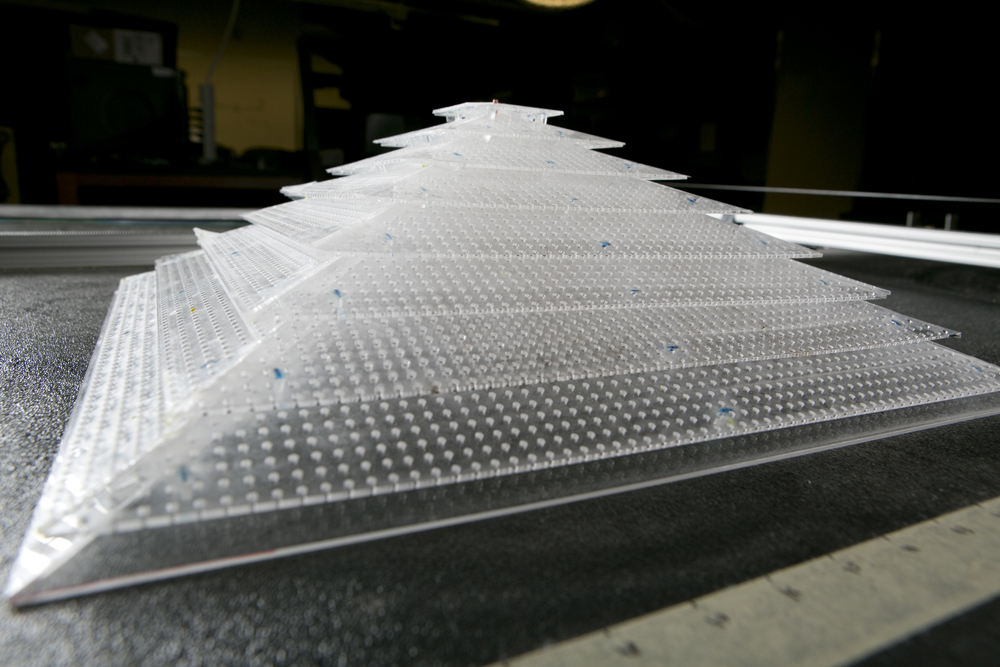3D acoustic cloaking device makes objects undetectable with sound
March 13, 2014

A 3D acoustic cloak. The geometry of the plastic sheets and placement of the holes interact with sound waves to make it (and objects beneath it) appear as if they are not there. (Credit: Duke University)
Using a few perforated sheets of plastic and extensive computation, Duke University engineers have demonstrated the world’s first three-dimensional acoustic cloak.
The new device reroutes sound waves to create the impression that both the cloak and anything beneath it are not there.
The acoustic cloaking device works in three dimensions, no matter which direction the sound is coming from or where the observer is located, and holds potential for future applications such as sonar avoidance and architectural acoustics.
The study appears online in Nature Materials.
“The particular trick we’re performing is hiding an object from sound waves,” said “By placing this cloak around an object, the sound waves behave like there is nothing more than a flat surface in their path.”
To achieve this trick, Duke University professor of electrical and computer engineering Steven Cummer and his colleagues used metamaterials — the combination of natural materials in repeating patterns — to achieve unnatural properties. The device looks like several plastic plates with a repeating pattern of holes poked through them stacked on top of one another to form a sort of pyramid.
To give the illusion that it isn’t there, the cloak must alter the waves’ trajectory to match what they would look like had they had reflected off a flat surface. Because the sound is not reaching the surface beneath, it is traveling a shorter distance and its speed must be slowed to compensate.
To test the cloaking device, researchers covered a small sphere with the cloak and “pinged” it with short bursts of sound from various angles. Using a microphone, they mapped how the waves responded and produced videos of them traveling through the air.
Cummer and his team then compared the videos to those created with both an unobstructed flat surface and an uncloaked sphere blocking the way. The results clearly show that the cloaking device makes it appear as though the sound waves reflected off an empty surface.
“We conducted our tests in the air, but sound waves behave similarly underwater, so one obvious potential use is sonar avoidance,” said Cummer. “But there’s also the design of auditoriums or concert halls — any space where you need to control the acoustics. If you had to put a beam somewhere for structural reasons that was going to mess up the sound, perhaps you could fix the acoustics by cloaking it.”
This research was supported by Multidisciplinary University Research Initiative grants from the Office of Naval Research and from the Army Research Office.
)
Abstract of Nature Materials paper
The control of sound propagation and reflection has always been the goal of engineers involved in the design of acoustic systems. A recent design approach based on coordinate transformations, which is applicable to many physical systems, together with the development of a new class of engineered materials called metamaterials, has opened the road to the unconstrained control of sound. However, the ideal material parameters prescribed by this methodology are complex and challenging to obtain experimentally, even using metamaterial design approaches. Not surprisingly, experimental demonstration of devices obtained using transformation acoustics is difficult, and has been implemented only in two-dimensional configurations. Here, we demonstrate the design and experimental characterization of an almost perfect three-dimensional, broadband, and, most importantly, omnidirectional acoustic device that renders a region of space three wavelengths in diameter invisible to sound.